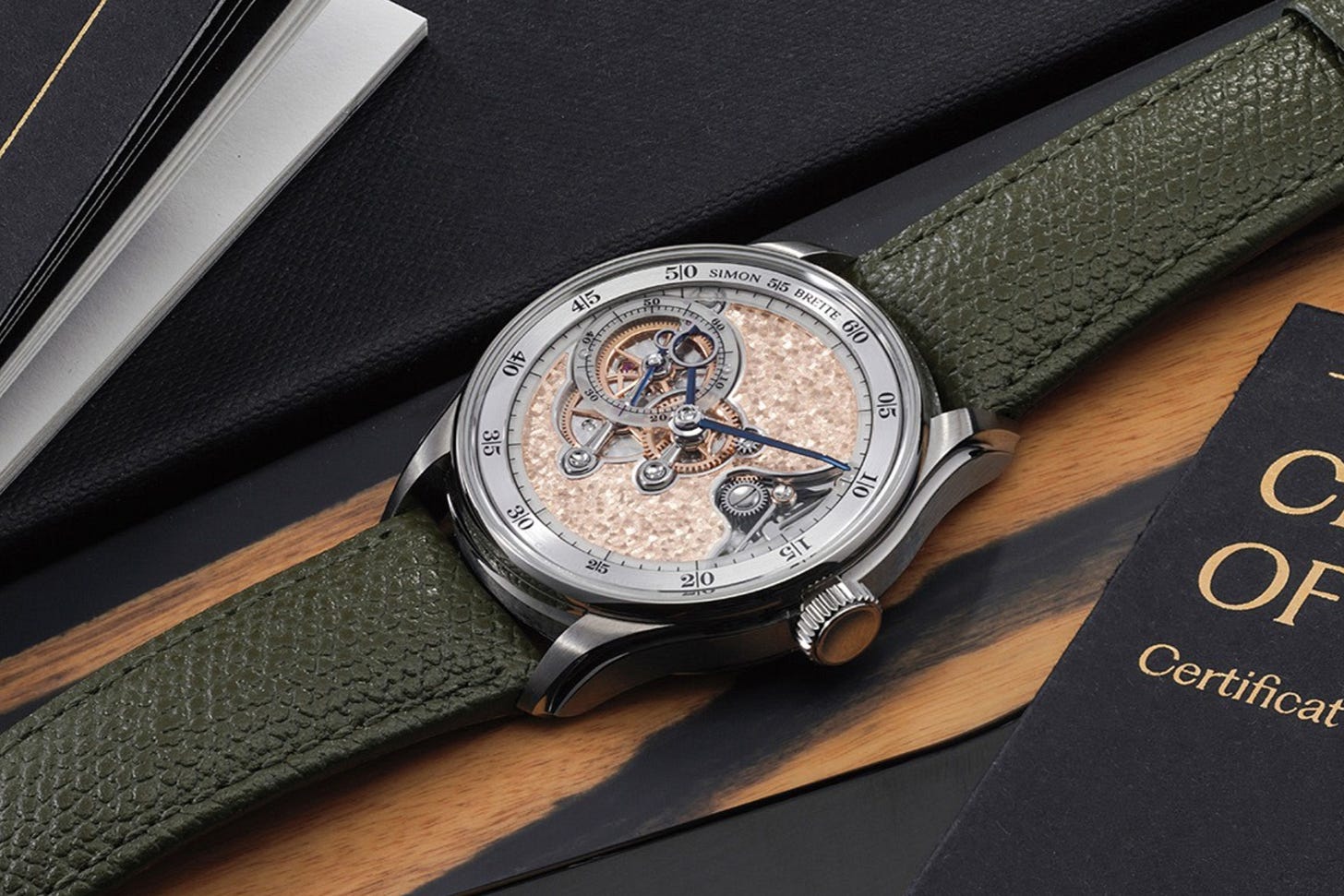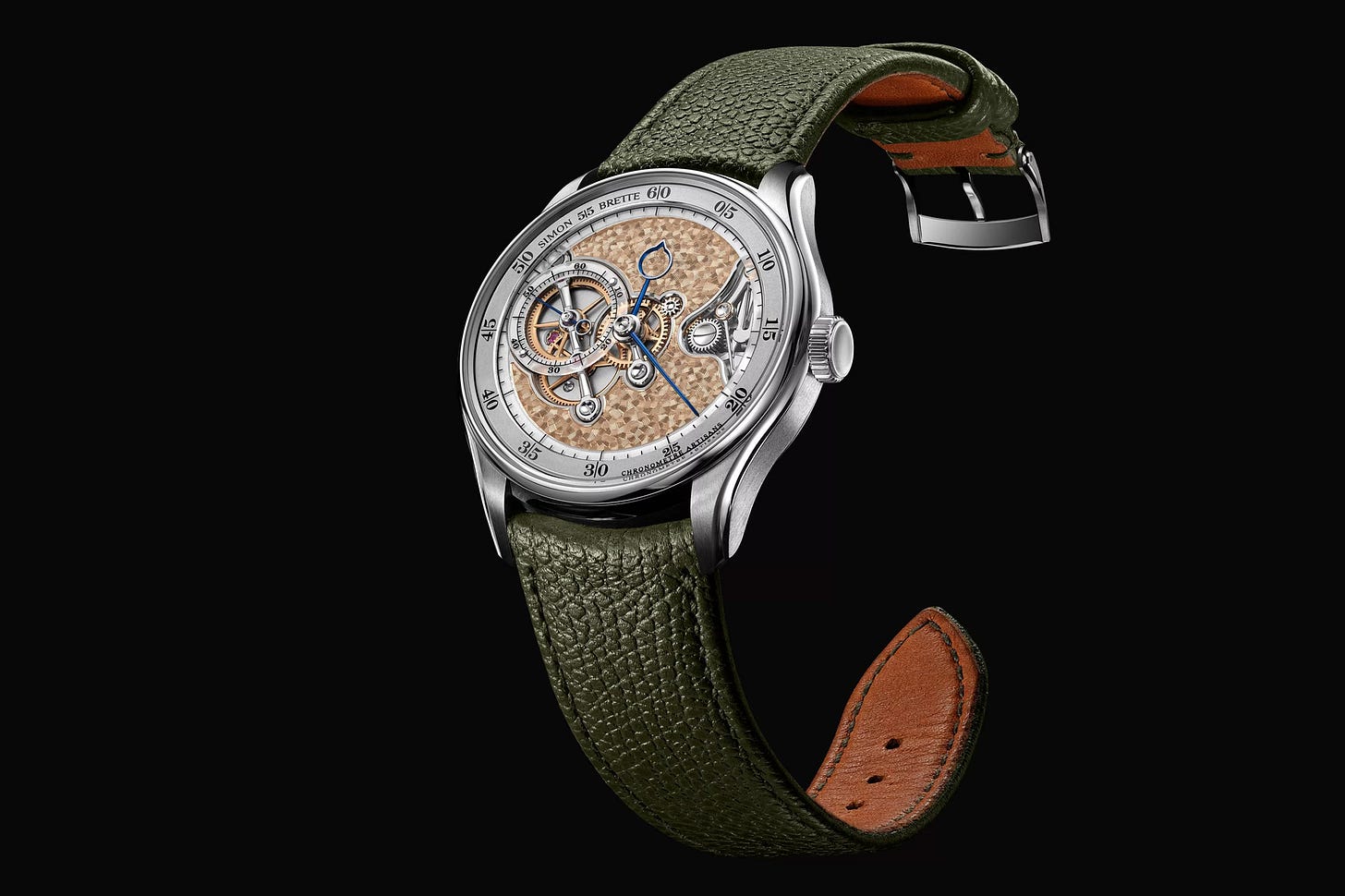Support Or Speculation: The Debate About Reselling Independent Watches
A special Simon Brette is up for sale at Phillips this weekend – and it invites us to ask some interesting questions about the unspoken rules of independent watch collecting.
Both Stephen and I want to use this platform, among other things, to share new and exciting voices from the watch world. I first met Emily Marsden (@secretdiaryofawatchgirl) at Watches & Wonders 2024. We were both on the IWC booth when I spotted her rocking a titanium Ingenieur. I did what every other watch geek out there would do and got chatting about it. We immediately hit it off. Insane energy, knowledge, and passion. She's a one of a kind. We have been friends ever since.
In this newsletter, we have opened the floor to Emily to share her views on what may just be the most interesting lot of this May auction line-up in Geneva: a Simon Brette Chronomètre Artisans Edition Titane at Phillips. It represents a significant moment for one of watchmaking's most promising young talents. This titanium edition, limited to just 99 pieces, follows Brette's original 12 zirconium souscription Chronomètre Artisans. The estimate is $73,400 to $147,000 and the lot's significance parallels the 2023 auction market introduction of Rexhep Rexhepi's Chronomètre Contemporain. I don't know about you, but I'm genuinely fascinated to see where it lands. Over to you, Em.
Best,
Justin
From Passion To Profit: Selling An Independent Watch
The Chronomètre Artisans by Simon Brette has quickly become one of the more sought-after watches in independent horology. Since its release in 2023, only around 60 pieces have been produced, and sightings remain rare. Of the original 12 subscription watches, one was sold shortly after delivery, and on May 9 a titanium example will be auctioned by Phillips, the first of its kind to hit a major auction house. Seeing an early Brette go up for auction got me thinking: Is there an unspoken social contract between early collectors and artisanal watchmakers?
At a surface level, the resale of a watch is simple market economics. A product changes hands for an agreed value, no different in theory from buying and selling any other object. Once ownership transfers, what happens next is at the discretion of the new owner. Yet, independent watchmaking often complicates this simplicity. The relationship between maker and buyer can carry a deeper, more personal weight. Many independent brands, especially those in the early stages of building their reputations, rely not just on capital but on trust. Buyers are often seen as early supporters rather than customers. As such, when a piece is resold, particularly soon after delivery, it can be viewed less as a neutral transaction and more as a signal, or even a fracture in the informal understanding between collector and creator.
Keep reading with a 7-day free trial
Subscribe to The Enthusiasts to keep reading this post and get 7 days of free access to the full post archives.





